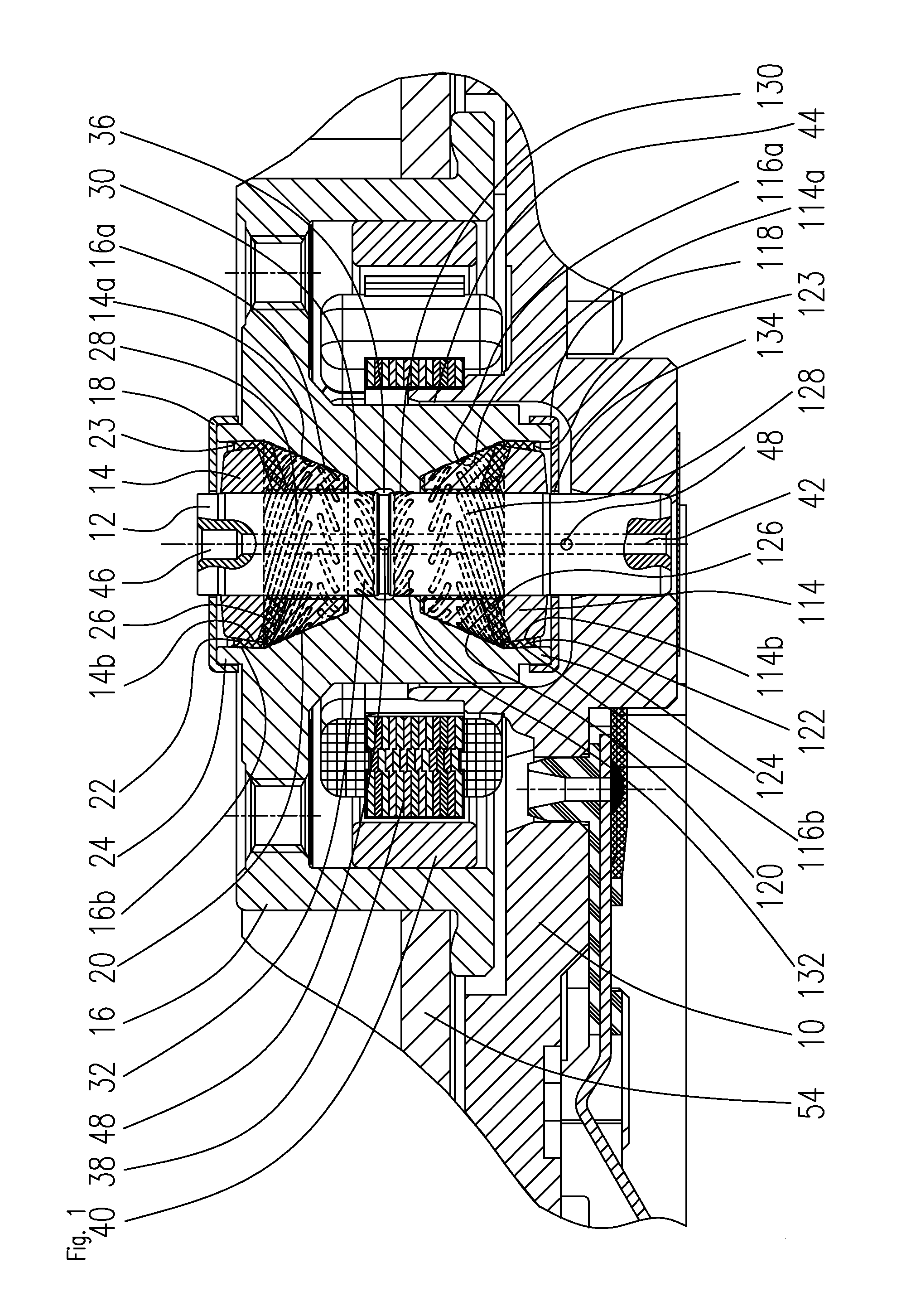Fluid dynamic bearing system
a dynamic bearing and fluid-filled technology, applied in sliding contact bearings, instruments, record information storage, etc., can solve the problems of not being able to detect the level of the fluid column within the sealing gap, not enough bearing fluid is filled into some bearings and too much is filled into others, and the cover cap prevents any optical inspection of the filling level of the bearing fluid. , to achieve the effect of convenient filling
- Summary
- Abstract
- Description
- Claims
- Application Information
AI Technical Summary
Benefits of technology
Problems solved by technology
Method used
Image
Examples
Embodiment Construction
[0021]FIG. 1 shows a section through a spindle motor having a fluid dynamic bearing system according to the invention. The spindle motor comprises a baseplate 10 having a bore in which a shaft 12 is fixedly accommodated. The bearing system takes the form of a conical bearing system having two bearing components working in opposition to each other and having conical bearing surfaces. Two bearing cones 14, 114 are disposed on the shaft 12 at an axial distance from one another. The upper free end of the shaft 12 may be connected to a stationary component (not illustrated), which could, for example, be a housing component.
[0022]Each bearing cone 14, 114 has an annular bearing surface 14a, 114a set at an inclination to the rotational axis 42. A further bearing component taking the form of a rotor component 16 is disposed rotatable about the rotational axis 42 with respect to the bearing cones 14, 114. The rotor component 16 also has annular bearing surfaces 16a, 116a set at an inclinatio...
PUM
 Login to View More
Login to View More Abstract
Description
Claims
Application Information
 Login to View More
Login to View More - R&D
- Intellectual Property
- Life Sciences
- Materials
- Tech Scout
- Unparalleled Data Quality
- Higher Quality Content
- 60% Fewer Hallucinations
Browse by: Latest US Patents, China's latest patents, Technical Efficacy Thesaurus, Application Domain, Technology Topic, Popular Technical Reports.
© 2025 PatSnap. All rights reserved.Legal|Privacy policy|Modern Slavery Act Transparency Statement|Sitemap|About US| Contact US: help@patsnap.com



